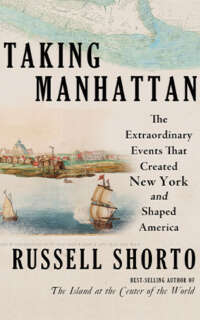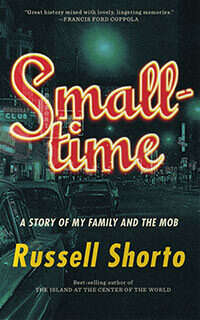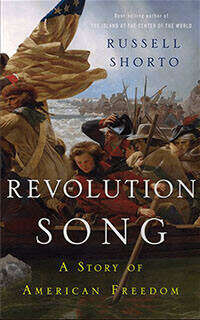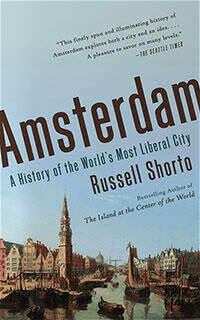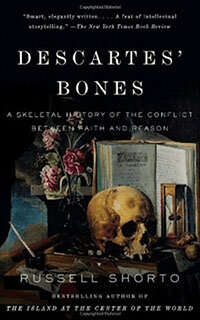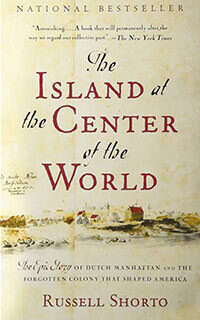The Un-Pilgrims
The New York Times
by Russell Shorto
November 27, 2003
PUTNAM VALLEY, N.Y. — Three hundred and eighty years ago, a huddled band of Europeans set out across the Atlantic to seek a new life in wilderness America. They survived hardship, gave thanks, ate turkeys and eventually flourished. And every year at Thanksgiving we ignore them.
No, I’m not talking about the Pilgrims, nor about that other sect often hailed as progenitors of America, the Puritans. There was another group of settlers at the start of things. You might call them the un-Pilgrims, for they lack the neat mythic qualities that won the Plymouth residents their plum role in the national epic. Rather, the Dutch colony of New Netherland — which had as its capital New Amsterdam, precursor to New York City — has a ragged historical profile, which suits it because it was a jumble of ethnicities and had an excess of pirates and prostitutes. But its mixed nature is precisely the point. These forgotten pioneers forged America’s first melting pot, making this holiday a particularly appropriate moment to recognize their achievement.
The contribution of these settlers has been overlooked because of that truest of truisms: history is written by the winners. The two great European rivals of the 17th century, the English and Dutch, each planted colonies in America. In time, the English engulfed the Dutch colony, which, we have been told, didn’t exist long enough to leave an imprint. But that’s not so. Dutch records — now being translated after centuries of neglect — reveal a thriving, complex society growing up alongside the English colonies. In fact, “Dutch” is something of a misnomer. The colony was Dutch, but more than half its residents were not. Then again, “Dutch” is very much the point. It wasn’t accidental that Swedes, Germans, Jews and others flocked to this colony, for the Dutch Republic of the 17th century was itself built on a policy of tolerance that made it the melting pot of Europe.
The birth of tolerance in the Low Countries changed history. It made Holland the center of publishing, where Galileo and Hobbes printed their books free of censorship. The Dutch provided haven to exiled English royalty and peasants from across Europe who fled war and repression. It’s often forgotten that the English Pilgrims, before taking a flyer on America, went to Holland in their search for religious freedom. They found it and then left for the same reason: they feared that amid the diversity of Holland their children would stray, and so opted to carve out an isolationist settlement in the New World.
In one of history’s most overlooked chains of influence, this same Dutch tolerance that made the Netherlands the intellectual center of early modern Europe also helped fashion the city of hip-hop and sushi, Korean delis and Arab newsstands. But the influence of New Netherland doesn’t end at the shores of Manhattan — or at Breuckelen, or even the tip of “Lange Eylandt.” The colony ranged across the Middle Atlantic region, covering parts of five future states. After the English takeover, its residents stayed and simply continued about their lives.
This is the region that historians now see as the birthplace of religious pluralism in America: as the origin of the melting pot. Consider some of the cultural odds and ends that came to us from the forgotten Dutch colony. Santa Claus — Sinterklaas — was a saint whose annual arrival was first celebrated in New Amsterdam. Americans eat “cookies” rather than “biscuits” because the Dutch colonists gave their children koeckjes, literally “little cakes,” and so gave rise to an Americanism. Such things are unimportant in themselves; collectively, though, they reveal that America’s first mixed society never really went away, but is woven into the nation’s DNA.
The colony centered on Manhattan was always an unruly place. Almost from the start there were 18 languages spoken in the capital’s few streets. And even as New Englanders like Anne Hutchinson streamed in, seeking refuge from Puritan rulers, the colony’s own most famous leader, Peter Stuyvesant, resisted the growing diversity: he tried to ban Jews and Quakers from settling, but was overruled in the home country. Then there were the 300 or so slaves in the colony — the blanket of tolerance hardly covered them.
So no, the colony didn’t have sharp outlines suitable for mythmaking, but then again pluralism is a messy business. What’s remarkable is that in an age of religious absolutism, persecution and war, this feisty community was busy debating the matter. The accepted thinking of the time was that a mixed society was inherently weak. The Dutch colony proved that by buckling under the more unified front of the English colonists. In the long run, however, the deep strength in the concept of a tolerant, pluralistic society — the ingenious idea that human intelligence could overcome prejudice and lead to a vibrant, vital culture — emerged. The notion flowered in the 19th and early 20th centuries, allowing waves of immigration that further strengthened the country and its ideals.
But as powerful a force as tolerance proved to be, it was never elevated to myth. Rather, the other side of that equation — the religious absolutism that spawned the Pilgrim and Puritan sects — had the hardness and firmness suitable for that purpose. In the 1660’s, just as New Netherland got its name changed to New York, the first American history books were coming off the presses. These were written in New England by the sons of the first Puritans and Pilgrims, and spun the story of America as one of English religionists on a pilgrimage to a Promised Land. Ever since, America has been blessed or burdened, depending on your point of view, with this idea of Manifest Destiny, of being uniquely chosen by God to do his will.
Maybe, with a new era of intolerance upon us, this is a good time to adjust our mythic priorities and give the other, forgotten Pilgrims a place at the Thanksgiving table. After all, the idea of tolerance proved so rich that mighty things grew up from it: both the greatest city and the most powerful nation on earth. That is surely something to acknowledge, to ponder, and to be thankful for.
#
